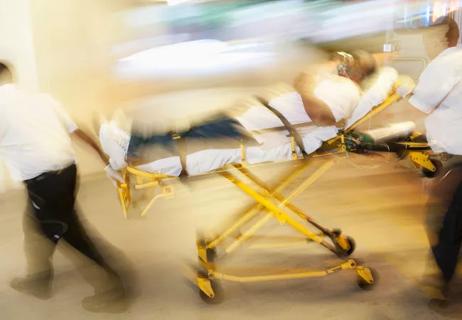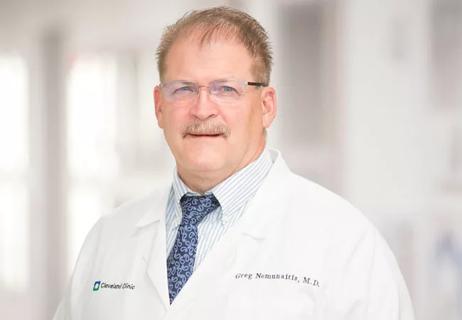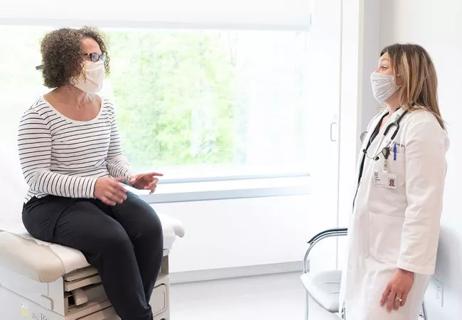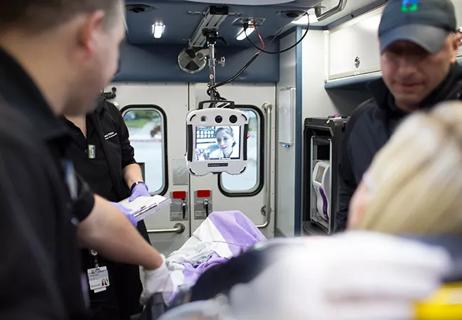An expert attendee draws conclusions from a range of leading studies
Cleveland Clinic is a non-profit academic medical center. Advertising on our site helps support our mission. We do not endorse non-Cleveland Clinic products or services. Policy
The 2019 installment of the American Heart Association’s International Stroke Conference (ISC 2019) — held Feb. 6-8 in Honolulu — delivered the meeting’s usual variety of scientific presentations, from acute therapy to prevention and from basic science to epidemiology. Here are five takeaways from major presentations that struck me as an attendee.
At last year’s ISC, results of the DEFUSE 3 trial solidified evidence for the extension of the treatment time window for mechanical thrombectomy for acute ischemic stroke through imaging selection. Those findings, together with results from the DAWN trial, changed treatment guidelines and stroke practice. At this year’s conference, results of the EXTEND trial showed that thrombolysis with alteplase (tPA) in acute ischemic stroke can be extended safely with imaging selection. This Australian study compared alteplase with placebo up to 9 hours after stroke onset in candidates selected using CT perfusion imaging.
A single study may not yet change clinical practice or have much impact on guidelines, and we await publication of the full study as well as other studies that may be needed to confirm the efficacy of imaging selection for thrombolysis. But early treatment is important, and we will not be bound by time for acute reperfusion therapy.
The MISTIE III trial in patients with stable intracerebral hemorrhage used a minimally invasive approach to dissolve the clot through controlled infusion of alteplase via a stereotactically placed catheter. While there were no differences in overall outcome compared with standard therapy, the 60 percent of patients who had their hematoma reduced to less than 15 mL — the surgical goal — were significantly more likely to achieve a good functional outcome. If the final hematoma was smaller than 30 mL, survival was better. These findings, which were simultaneously published in The Lancet, offer hope that some other minimally invasive approach to reduce hematoma will be effective in reducing long-term disability and increasing survival.
The other major hemorrhage trial was iDEF, which used the iron chelator deferoxamine for three days after intracerebral hemorrhage. The NIH-funded phase 2 trial showed safety but no signal of efficacy, and the approach was deemed futile.
While observational studies have linked hyperglycemia with worse outcome following ischemic stroke, the SHINE trial showed no benefit from intense insulin infusion therapy (to a target glucose < 130 mg/dL) over standard insulin therapy (to a target < 180 mg/dL) in the first 72 hours after ischemic stroke. This is in line with more general medical and surgical ICU studies that have failed to show better outcome with better glycemic control.
Separately, the ENCHANTED study compared blood pressure (BP)-lowering targets — specifically, < 140 mm Hg (intensive) versus < 180 mm Hg (guideline target) — following thrombolysis with alteplase in patients with acute ischemic stroke. Among 2,196 patients randomized, there were no differences in clinical outcome at 90 days, with intracranial hemorrhage being reduced but no significant reduction in symptomatic hemorrhage. The study was published simultaneously in The Lancet.
Also published in The Lancet was RIGHT-2, a more general study of ischemic and hemorrhagic stroke using glyceryl trinitrate transdermal patch compared with placebo. The study design was unusual, as patients were enrolled, randomized and started on study therapy during ambulance transport before arrival at the hospital, without distinction between ischemic and hemorrhagic stroke or physician exclusion of stroke mimics. Glyceryl trinitrate, a nitric oxide donor, was shown to have a BP-lowering effect, with a 5.8-mm Hg difference in systolic BP observed relative to placebo by the time of hospitalization. However, while the investigators found it was safe to lower blood pressure with glyceryl trinitrate, no beneficial effect was seen on patient outcome.
Two randomized clinical trials — one in Los Angeles (SUCCEED) and another in North Carolina (COMPASS) — attempted to improve patient care following stroke.
SUCCEED focused on chronic disease self-management, education and adherence but found that intervention had no better effect than usual care on patients’ blood pressure control, lipid profile, physical activity or dietary change. COMPASS randomized hospitals to delivering usual care or comprehensive care that was focused on secondary prevention, recovery and caregiver support and provided by a care team consisting of a nurse care coordinator with an advanced practice provider or physician. Results from COMPASS found no differences in patients’ functional outcome. Both studies were hampered by low levels of implementation — i.e., a low percentage of patients actually receiving the intervention.
While stroke care providers attempt to broaden our focus on post-hospitalization care, the barriers to continuous, integrated care through stroke programs still remain formidable.
Telerehabilitation at home was shown to be noninferior to in-person, in-clinic occupational therapy at improving upper extremity function in stroke survivors in a randomized NIH-funded trial. Upper extremity impairment was the focus in both approaches, but telerehabilitation used games to exercise the upper extremity. Notably, telerehabilitation participants in this study still had an occupational therapist supervise their sessions over the computer. While the study’s noninferiority design might temper enthusiasm about the findings, the telerehabilitation approach offers opportunities for recovery for patients who may be limited by travel distance or cost.
Dr. Uchino is Director of Research and Education in Cleveland Clinic’s Cerebrovascular Center.

Analysis characterizes geography’s sizable role in urban/rural care divides

New analysis details the disparities and points to opportunities for improvement

In survey, both female and male respondents reporting ongoing concerns

Group advocates for stroke systems of care supported by telestroke and proper reimbursement

Dr. Gregory Nemunaitis looks to build on his history of integrating education, research and patient care

Mission centers on screening, prevention for at-risk women in their 30s to 60s

One-year results from national database confirm enduring benefits

Q&A with Dr. Andrew Russman, Medical Director of our Comprehensive Stroke Center